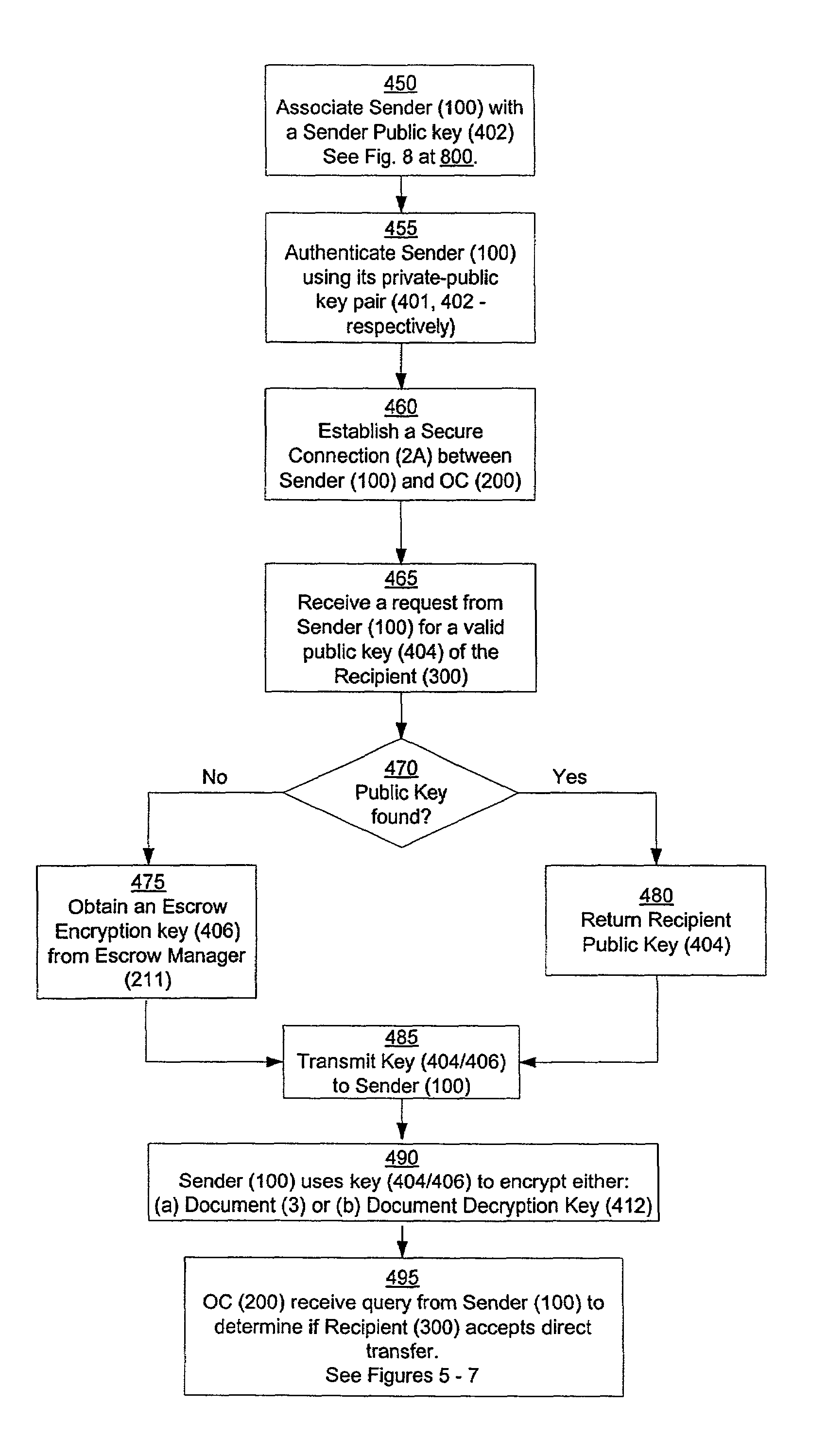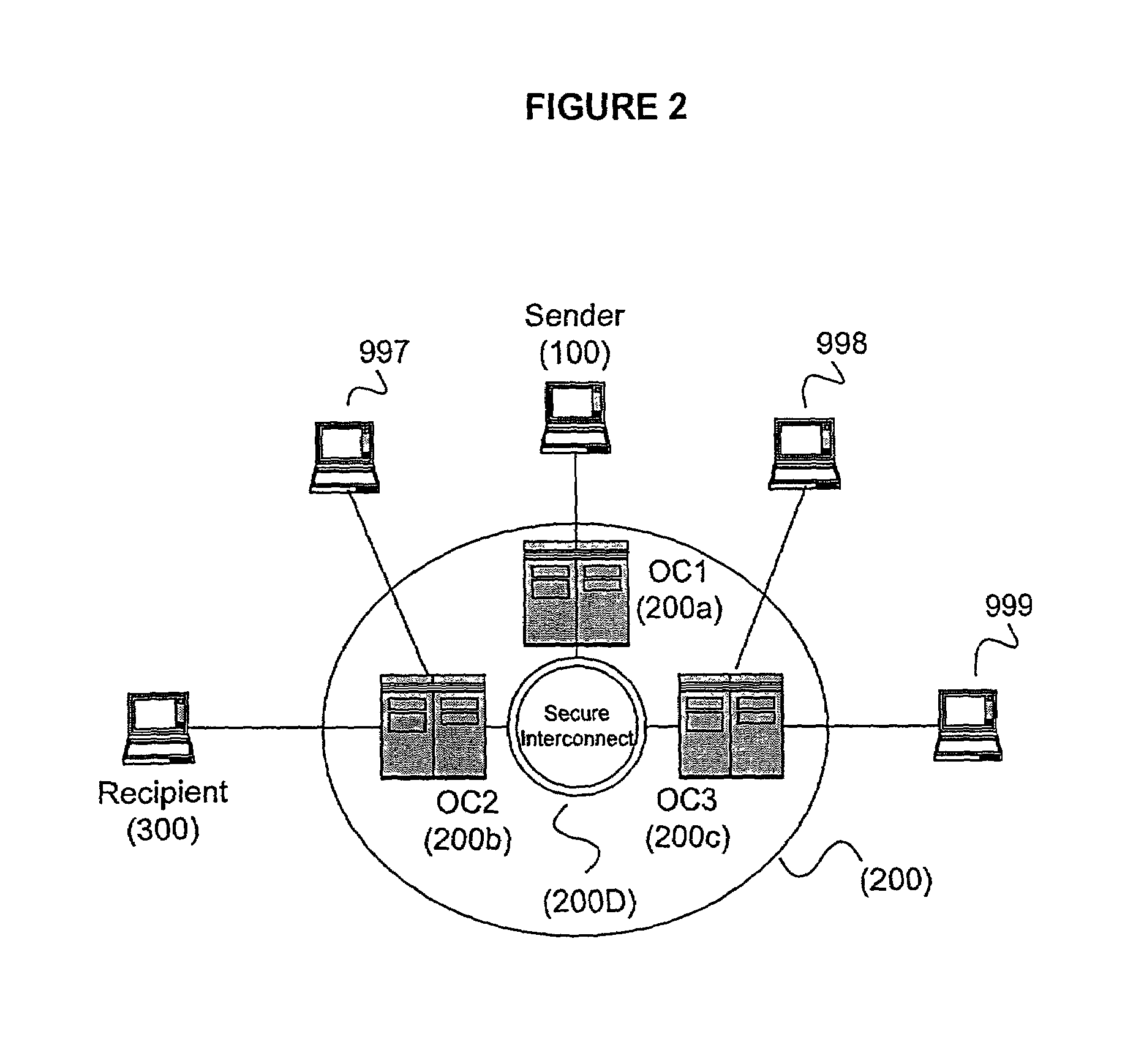Secure and reliable document delivery
a document delivery and secure technology, applied in the field of secure and reliable data transmission, can solve the problems of unsatisfactory security and reliability of neither of these delivery methods, and is not particularly reliable, and achieve the effect of facilitating a direct and secure connection (2c)
- Summary
- Abstract
- Description
- Claims
- Application Information
AI Technical Summary
Benefits of technology
Problems solved by technology
Method used
Image
Examples
Embodiment Construction
[0027]Before turning to the Figures, it is instructive to review some principles of cryptography. Cryptographic algorithms can generally be divided into two classes: symmetric key cryptography and asymmetric key cryptography. The keys themselves are typically large numbers derived from complex mathematical algorithms. These keys are used to encrypt and / or decrypt a message.
[0028]Symmetric key cryptography uses a single key to both encrypt and decrypt a message. A message encrypted with a symmetric key can, for all practical purposes, be decrypted only by that same key. For example, if a sender encrypts a message with a symmetric key and sends the encrypted message to a recipient, the recipient can decrypt the message only if he possesses the same key that the sender used to encrypt the message. One of the benefits of using symmetric keys is efficiency. The amount of computing (and therefore, the amount of time) necessary for encrypting and decrypting the message is less than that re...
PUM
 Login to View More
Login to View More Abstract
Description
Claims
Application Information
 Login to View More
Login to View More - R&D
- Intellectual Property
- Life Sciences
- Materials
- Tech Scout
- Unparalleled Data Quality
- Higher Quality Content
- 60% Fewer Hallucinations
Browse by: Latest US Patents, China's latest patents, Technical Efficacy Thesaurus, Application Domain, Technology Topic, Popular Technical Reports.
© 2025 PatSnap. All rights reserved.Legal|Privacy policy|Modern Slavery Act Transparency Statement|Sitemap|About US| Contact US: help@patsnap.com



